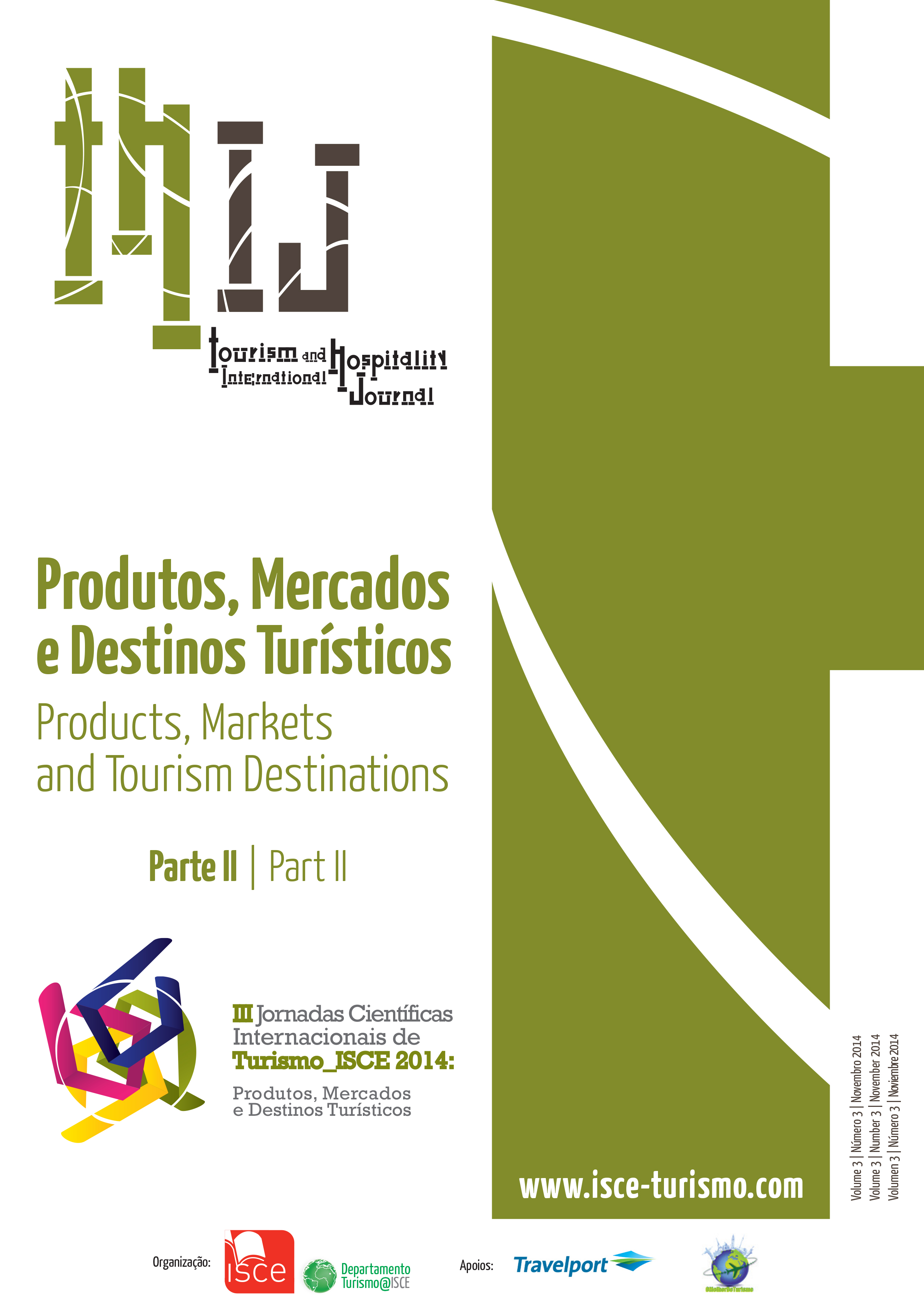La importancia del análisis factorial de correspondencias en la identificación cuidadosa del perfil de un determinado mercado turístico. Análisis del caso Caramulo
DOI:
https://doi.org/10.57883/thij3(2)2014.30152Palabras clave:
Correlación, Perfil, Promoción, MarketingResumen
Determining the profile of the tourist of a particular region is a very important topic within the scope of Tourism Marketing research, as it allows the evaluation and perception of their characteristics, in addition to enabling the targeting of Marketing actions by adapting specific forms of communication for this type of tourist. For an investigation of this type, one of the first procedures is to determine the objectives of the study and to put forward hypotheses. To assess the hypotheses, a mere description of reality is not enough, it is essential to make inferences about the variables under study. Technological progress has boosted data analysis and the fine-tuning of new statistical processes. This advance has made it possible to quickly manipulate a large amount of information, such as factor analysis of correspondences and the study of the connection between a significant number of variables at the same time. This article intends to demonstrate that the application of the analysis of correlations of variables has considerable importance in the more refined determination of a consumer profile of a given tourist destination. To exemplify this proficiency, a study was carried out on the consumer profile of the Caramulo region in order to understand its main characteristics and behaviors. The study also allowed to evaluate if, in the promotional actions carried out by the entities of the region, all its touristic potential is being considered. To this end, the sources of information that influenced the decision to choose this destination were correlated with age, as well as the degree of satisfaction of the consumer, with the intention to visit the region again, which allowed to obtain conclusions that proved to be very interesting and fruitful from the point of view of Regional Marketing.
Citas
Almeida, S. (2003). A contribuição da animação turística para o aumento das taxas de ocupação de uma região. Dissertação de Mestrado, Universidade de Aveiro.
Ashworth, G & Voogd. H. (1994). Marketing of tourism places: What are we doing? In Global Tourist Behavior. Ed. Uysal. New York: International Business Press.
Baker, M. & Cameron, E. (2008). Critical success factors in destination marketing, Tourism and Hospitality Research, 8(2).
Bryman, A & Cramer, D. (2003) Análise de dados em ciências sociais - Introdução às técnicas utilizando o SPSS para windows. Oeiras: Celta Editora.
Bryman, A. (1988). Quantity and quality in social research. London: Unwin Hyman.
Cooper, C. & Hall, M. (2008) Contemporary tourism: An international approach. Oxford: Elsevier.
Fecha, T. (2013). A importância do perfil do turista na promoção de um destino turístico: O caso do Caramulo. Dissertação ESTM – Peniche.
Guimarães, P.R.B. (2008). Métodos quantitativos estatísticos. Curitiba: IESDE Brasil S.A.
Levin, J. & Fox, J. A. (2004). Estatística para as Ciências Humanas. São Paulo: Prentice Hall.
Moreira M., M. R. & Reis, E. (1998). As sondagens e a população: O que fazer para a reconciliação. Revista de Estatística, 1, 97-109.
Pestana, M. & H. Gageiro, J. N. (2000). Análise de dados para ciências sociais: A complementaridade do SPSS”, 5ª Edição. Lisboa: Edições Silabo.
Quivy, R & Campenhoudt, L. (2005). Manual de investigação em ciências sociais, 4.ª Edição. Lisboa: Gradiva.
Zimmer, P. & Grassmann, S. (1996) Avaliar o potencial turístico de um território. Bruxelas: Observatório Europeu Leader.
Faísca, L. (2010). Modelar relações entre variáveis quantitativas, seminários de métodos e análise de dados. dIsponível em http://w3.ualg.pt/~lfaisca/SMAD05/SMAD%2005.pdf
Plano Diretor Municipal de Tondela. (2008). Disponível em https://www.google.pt/#q=plano+diretor+municipal+tondela.
Silva, F. V., Barbas, M. P. B. S. C. & Silva, L. A. C. (2006). Explorar o SPSS em contexto educativo. Santarém: Escola Superior de Educação de Santarém. Disponível em http://repositorio.ipsantarem.pt/handle/10400.15/389.
Descargas
Publicado
Cómo citar
Número
Sección
Licencia
Derechos de autor 2023 This work is licensed under a Creative Commons - Attribution 4.0 International (CC BY 4.0)

Esta obra está bajo una licencia internacional Creative Commons Atribución 4.0.
Este trabalho encontra-se publicado com a Licença Internacional Creative Commons Atribuição 4.0.






